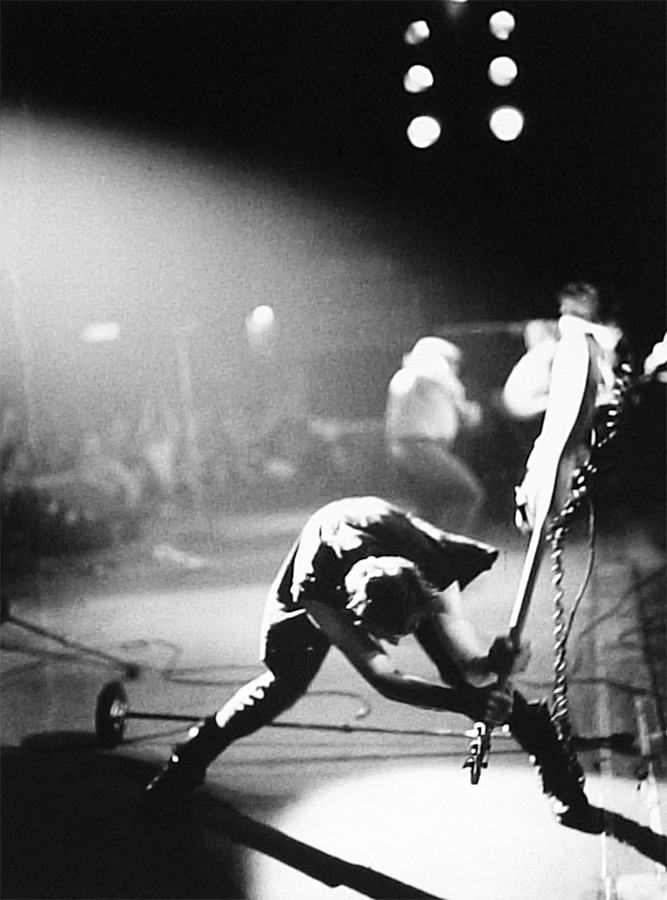One guy had too much oil propaganda

Ever seen a gas powered gas pump? Me neither.
One of the reasons I am an atheist. I mean what was God thinking making these morons?
Do they really think the 30 computers in their car will survive an EMP?
or the oil infrastructure?
In California? They have black outs every summer. The power going out is a valid concern
Lived in California (SoCal and Bay Area) my entire 42 years.
No, we don’t.
There was a short, planned outage in my neighborhood (San Diego suburbs) last summer - we got a few days notice (can’t recall if it was a letter or an email). Didn’t have one the summer before that. I don’t recall any power outages when I lived in the Bay Area.
We have power outages from time to time in my part of SoCal, but the power lines cross through a fire hazard zone. Guess what’s causing it to become more hazardous? Climate change.
This is more about modernizing the grid and adapting to climate change (caused in large part by fossil fuels), and I’m happy to live in a state that invests in infrastructure while trying to solve the problems we’ve been dealt. I can’t say my native red state was doing anything remotely productive (unless the fed was handing out money of course).
A planned blackout is still a blackout.
A moron is still a moron.
If the power goes out there will be no signalling on the tracks, no barriers or traffic lights at level crossings, no lights or announcements at train stations, etc.
Even though a diesel locomotive technically could run with no external power, no regular train will be operating during a general power outage.
Same goes for an EMP, even though that would likely fry the diesel locos control systems anyways
Are you thinking of Texas?
Nah. I’m thinking of the state that has regular black outs, California.
“California” has never had a blackout, dum dum.
Blackout as in the city lights going out or the whole state grid failing?
Any time power is not being delivered. Doesn’t matter if it’s to the state or a small town.
That shouldn’t prevent electrified trains. By that logic, my village daily saw power cuts yet an electrified rail track runs cleanly next to it. The power cut happens in the towns but unless the national grid fails, trains should keep working.
Well since a state has never had a blackout, I guess we’re talking about a small town then? No biggie.
It’s hard to have a constructive conversation about reality when people keep ranting about the world of pure imagination.
As usual, you have no clue what you’re talking about.
You tend to lag behind when your laws are bought by corporate interests keen on keeping it the same
Till 2019, <1 % of total rail in US was electrified according to Wikipedia? Is this true; considering that US was a world leader in terms of rail transport upto WW II, why the abysmally low numbers? I know that privatisation of rail networks and car centred cities makes life tough for rails, but 1 % is abysmally low for a developed nation.
In contrast, China is at 75% and India is at 93% respectively and both of them also have giant railway networks.
The WW II US rail network is loonnnnggggg gone and doesn’t really have any effect on the modern day. What remains is mostly freight rail run by a few oversized rail corporations… and they’re surely in no hurry to abandon their diesel engines.
There’s also not huge political pressure because rail is already a very efficient way to transport goods. Spreading rail would have better effects than electrifying rail.
Till
‘til*, short for “until.”
Sorry to be that asshole but it’s frustrating how often this is misused.
You are wrong, till is perfectly fine – and so is til. See Merriam-Websters article about this, at https://www.merriam-webster.com/grammar/should-you-use-until-or-till-or-til
this might be a regional thing. I’ve never once in my life seen it spelled that was. to me til had only ever been an acronym for “today I learned”
considering that US was a world leader in terms of rail transport upto WW II, why the abysmally low numbers?
We spent all our rail money on the interstate highways and their exorbitant maintenance costs.
They’re probably not counting subways. It may even be just intercity rail, which mostly supports freight. You have thousands of miles of freight rail crossing the entire country, and only the Acela passenger track in the northeast is electrified
Electric trains‽ that will never work, trains need to be loud and dirty.
What the hell is this: ‽
It’s an interrobang‽
What you mean like any sane country already did?
India is at 95% and Switzerland at 99%. PS. Just found it in random news article so numbers might not be correct.
I read that as “California launches electric trains at US…” and I was confused.
I read your comment as “…electric trains AF…”
That’s just Oprah giving out free shit again
🏃🐝🏃♂️🐝🏃♀️🐝
Mention trains and US becomes a Joke!
Same with “cars” tbh.
Or “street cars.”
Or “high speed rail”
Or “public transport”
Man, there’s a lot…
TBH you could mention almost anyting and US would be a joke.
I’m happy for a new streetcar line that is almost done in my area. My happiness is pretty pathetic and sad.
Your happiness is valid 🙂
wouldn’t be so far behind if muskrat didn’t set us behind by about a decade due to his monorail project
The rail lines…
The two new trains are operated by Caltrain… The trains were put into regular service the following day, running along the route between San Jose and San Francisco.
https://www.theverge.com/2024/8/12/24218547/caltrain-electric-train-us-lags-behind-india-china-eu
deleted by creator
Yes. Fearmonger more. You keep up that driving! The rest of us will take advantage of more spare time to read while we cruise smoothly by the cars sitting in traffic. Truly a nightmare.
Lol OP ain’t gunna read regardless
Innevitably whatever public transportation you use the route will end up in the ghetteo.
This is a mindset that many people in the U.S. will need to get over before the “quality” of public transport improves: that busses, trains, subways are for “the poor”.
I’ve been on the subways in New York and busses and trains elsewhere in the States. They’re gross. Especially, compared to most of Europe (Italy, Denmark, Germany, etc). In Asia, they’re also a clean. The mindset in Asia and Europe is “this is what people (not just the poor) take to get from point A to point B”. There aren’t school busses, the kids just take the same city bus/train/subway that all the other people take to get to work.
I’ve spent 45 minutes in the States on my daily commute staring at (and riding on) the bumper of the car in front of me. I’ve also spent 45 minutes, in Europe, peacefully riding the subway to work. I’m able to surf the web, watch a video, relax. I definitely enjoy/recommend the later experience.
I’m pretty sure the socially unacceptable behavior from homeless drug addicts is driven by factors that drive homelessness and drug addiction and not by the preference of most people to avoid homeless drug addicts in public spaces. Unless you’re implying law enforcement or society at large “clean up” public transportation…
Removed by mod

















